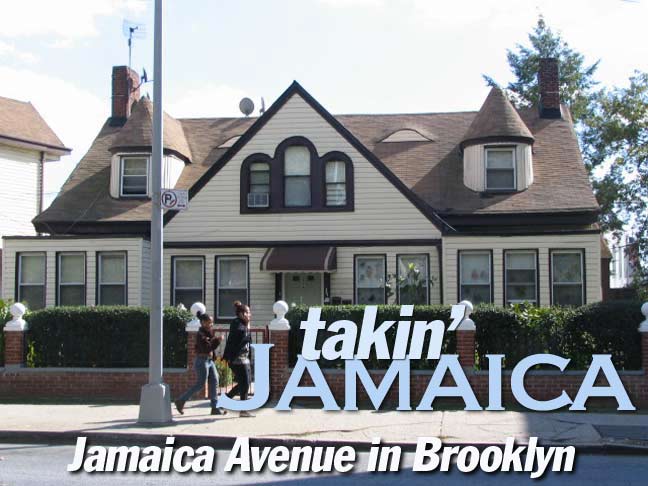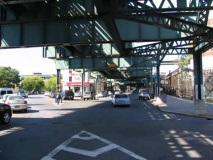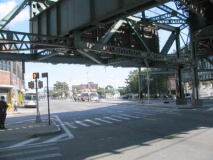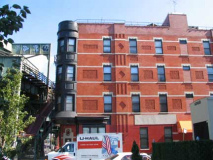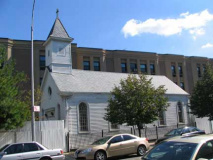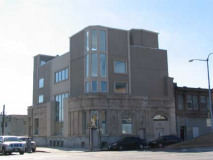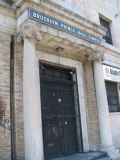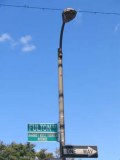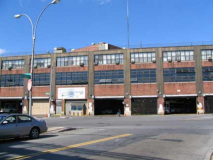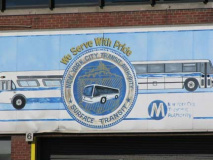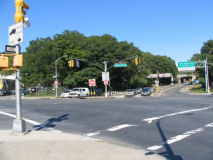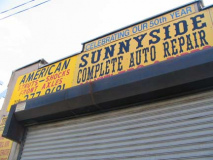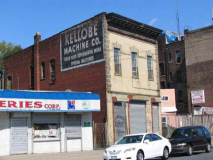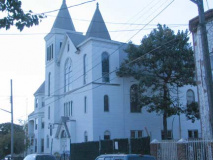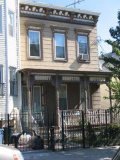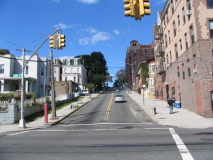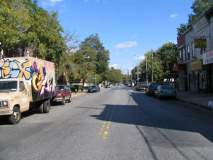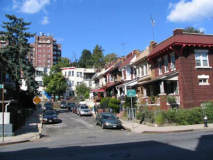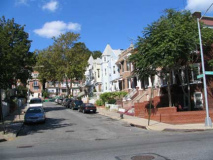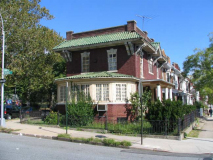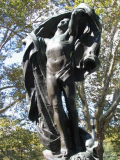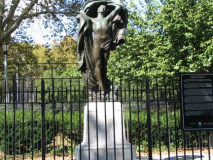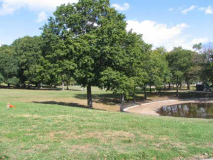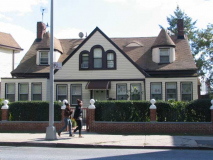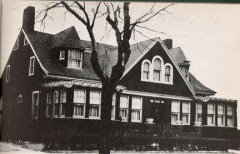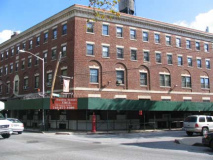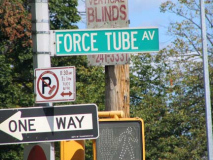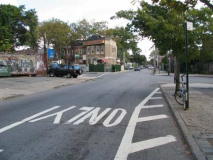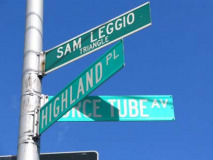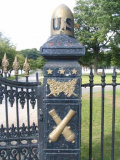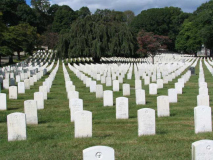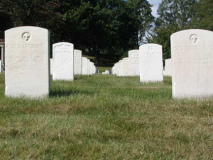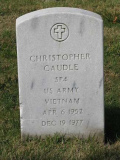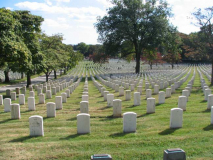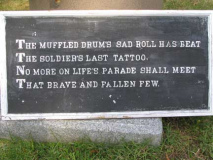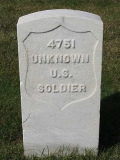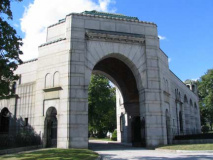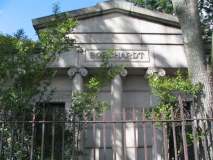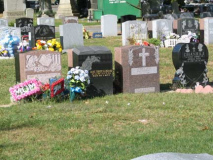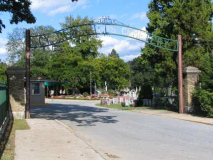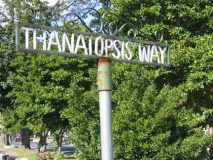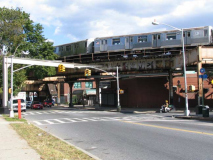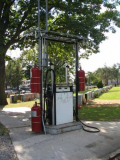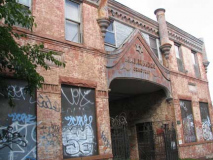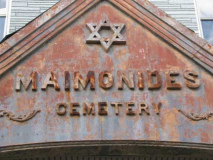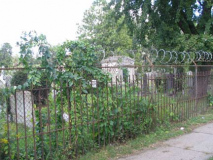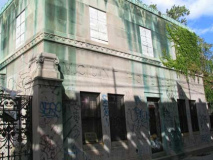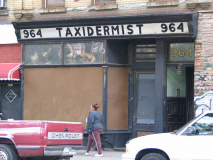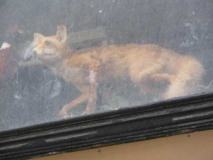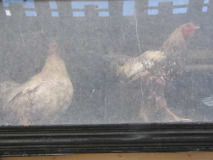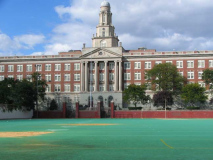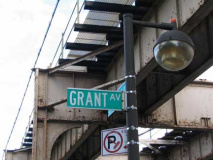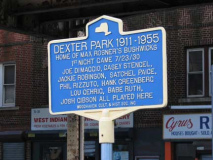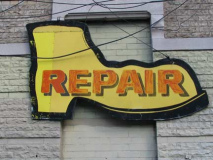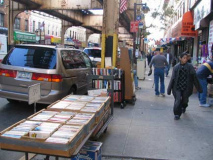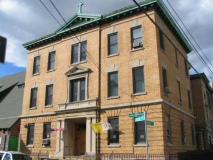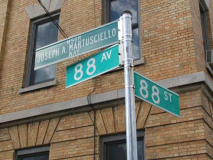A few months ago FNY took you on a tour of the eastern end of Jamaica Avenue in Floral Park and Bellerose, the part that was recently renamed Jericho Turnpike to match its Nassau and Suffolk County extension. This week, we’ll take a journey down Jamaica Avenue’s western end, that rides along the south end of Highland Park and Queens’ cemetery belt, or, if you prefer, the north end of East New York and Cypress Hills.
Jamaica Avenue dates back the colonial era, and earlier than that, it was an Indian trail from the East River to mid-Long Island. From the Richmond Hill Historical Society:
An Indian trail led from the Great [Hempstead] Plains to the Cove, at the northern end of the Heights on the East River, which became the site of the Brooklyn Ferry. This trail was widened by the Hempstead settlers, and became known as the Ferry Road. Another Indian Trail, intersecting this one at Jamaica, ran along the line of Flushing Main Street, Kissena Boulevard, and Parsons Boulevard. The roads were made in the earliest days from these trails.
On June 19,1803, a law was passed, providing for one public and general highway to extend from the Ferry in Kings County, through that County and the Counties of Queens and Suffolk. The Ferry Road was improved to comply with that law. Other roads, coming from the various county towns, and connecting with the Ferry Road, were also improved under the act. The main road and these feeder lines, became one system, known under the common name of Kings Highway.
Under the General Turnpike Act of 1807, the Brooklyn, Jamaica and Flatbush Turnpike Company was incorporated, on March l7, l809. The incorporators were,- John D. Ditmars, Eliphalet Wickes, Abraham Rhodes, John C. Vanderveer, Cornelius Bergen and Barent Lefferts.
Jamaica Avenue, originally paved with wood planks, was one of the “turnpikes” created under the act; tolls were collected along the road, which, at various locations (in East New York and Woodhaven, at Essex Street, Nichols Avenue, and today’s Van Wyck Expressway) featured actual tollgates, long wood poles called “pikes” that were “turned” when the toll was paid. In 1897 Jamaica Avenue became a public road and the tolls were eliminated.
Today’s Jamaica Avenue (seen at left) begins proper at a busy tangle of roads and elevated railroads. At this junction, known as Jewell Square, not only Fulton Street, East New York Avenue, and Brooklyn’s Broadway all meet, but nearby, the Canasie Elevated (the L train) and the Jamaica Elevated (J, Z) twist themselves into overhead spaghetti as they intertwine. Here you will find a vast subway car yard and one of Brooklyn’s largest bus depots.
Broadway, above right, begins its march to Williamsburg here, forming the boundary of Bushwick and Bedford-Stuyvesant. Not till it reaches the Williamsburg Bridge does it glimpse any daylight. Meanwhile East New York Avenue runs southwest into the heart of East Flatbush. Fulton Street, meanwhile, follows the colonial trail formerly called Kings Highway west to Fulton Ferry.
Neither is Jamaica Avenue spared a shadowing of elevated railroad. This same el will later snake its way north and join Jamaica Avenue along Queens’ Cemetery Row, as we’ll see later.
Before walking northeast on Jamaica Avenue I explored a fascinating area in the blocks south surrounding Fulton Street and a series of streets named for states: Georgia, Alabama, Pennsylvania, New Jersey, and Vermont. I don’t know why these states were selected to be so featured, and I don’t detect a pattern; all are not original states since Alabama is included.
Above left: restored brick building at Alabama and Fulton. Above right: the section of the Jamaica El (J, Z) from the Alabama Avenue to Crescent Street station is the oldest stretch of elevated track still in use in NYC: it goes back to about 1890. The building is a former hotel and originally featured a towering conical cornice.
Left: you will still find some 1950-vintage curved-mast NYC streetlights lurking under the el.
Turning south on Georgia Avenue, I found this curious unmarked steepled church. Stumped, I turned to Ricardo Gomes, proprietor of the excellent East New York Project, the online directory of all mysterious and not so mysterious items in this underchronicled neighborhood, who identified it as the Wartburg Chapel, belonging to the Wartburg Home for the Aged. It originally faced Georgia Avenue , but when they did a significant expansion they turned the Chapel sideways to make more room. It is over 100 years old.
The old 26th Ward Bank building at Atlantic and Georgia Avenues. When I first snapped it in 1999 it was decrepit and I had thought it was on its death throes before demolition. I couldn’t have been more hopelessly wrong….it has been given a thorough makeover. Into what, I’m not sure.
Heading north toward Jamaica Avenue on Pennsylvania Avenue we encounter a couple of significant names in black American history. This Masonic temple is named for Prince Hall (1735-1807), the founder of the first African American Masonic lodge. He spent most of his life in Boston and is interred in the city’s famed Copp’s Hill Burying Ground in the North End.
Harriet (Araminta) Ross Tubman (1820-1913) was born into slavery in Maryland. After escaping in 1849
she made thirteen missions to rescue some 70 slaves using the Underground Railroad. (Early biographies listed more, but historical evidence does not support those claims.) During her lifetime, she worked as a lumberjack, laundress, nurse, and cook. As an abolitionist, she helped liberate scores of captives, and inspired many more to do so independently. During the American Civil War, she was responsible for several roles such as intelligence gatherer, refugee organizer, raid leader, nurse, and fundraiser. Tubman was the first African-American woman to plan and lead a military operation. She prided herself in never losing a passenger on the underground railroad, and never being captured. wikipedia
The surface transportation complement to the East New York subway yards, the East New York Bus Depot dates back to the horsecar days of 1859.
Jamaica Avenue encounters another grand junction at Pennsylvania Avenue, Bushwick Avenue (barely seen at far left) running northwest through its titular neighborhood to East Williamsburg, and the Jackie Robinson Parkway, constructed through the cemetery belt and Forest Park from Jamaica Avenue to the Grand Central Parkway at Union Turnpike in Kew Gardens between 1933 and 1935. Originally a four-lane roadway with numerous tricky curves, the road had to be rebuilt on a couple of occasions to make it safer. In 1997 it was renamed for the great Brooklyn Dodgers star from 1947 to 1957 on the fiftieth anniversary of his callup to the big leagues. It was previously known as the Interborough Parkway despite spending less than a mile in Brooklyn.
RIGHT: American Sunnyside. The small neighborhood in the hilly area north of Jamaica Avenue from the Jackie east to Highland Park is called Sunnyside. Its main drag, Highland Boulevard, is worth a FNY page in itself as it contains a number of mansions that overlook East New York from a promontory.
Painted sign for the former Kellobe Machine Company, Jamaica and New Jersey Avenues.
Wyona Street, running south from Jamaica Avenue just east of Vermont Avenue, is worth a look for the Christ Lutheran Church, built in 1894 as the Christ Evangelical Reformed Church. Now home to a Latin congregation.
Across the street, a “Stick Style” porched house retains full plumage, and an elephant raises a trunk for luck.
Miller Avenue, one of Brooklyn’s steepest streets, rises toward the mansions along Highland Boulevard in Sunnyside from Jamaica Avenue.
You wouldn’t think, from this photo taken of Jamaica looking NE from Hendrix Street, that this is a former Indian trail, colonial road, tolled pike, and, presently, as Route 25, extends to Orient Point at the eastern end of Long Island. Jamiaca Avenue is all of those.
It’s purely coincidental, but Jamaica Avenue encounters streets whose names became synonymous with British and American pop beginning in the Swingin’ Sixties: (Jimi) Hendrix Street, (Dionne) Warwick Street and, of course, Elton (John) Street.
New York City has relatively few alleys, so when you see unexpected residential alleys like these two, Van Siclen Court (left) and Schenck Court built into the hillside north of Jamaica Avenue, it’s a relative treat. These are in the tradition of Sniffen Court in Manhattan’s Murray Hill, Wogan Terrace in Bay Ridge, and Charlotte Street in Ridgewood.
The triangle formed by Jamaica and Ridgewood Avenues and Warwick Street features a long-ago real estate development featuring attached brick houses with columned front porches. This house, facing Warwick, is especially interesting with its large interior porch with dozens of paned windows looking west on Jamaica Avenue, and also what must be the original iron fence and gate. Unfortunately a closer look reveals a pressing need for upkeep.
Ridgewood Avenue seems to follow the occasional NYC tradition of naming an avenue for a neighborhood where it does not go (see Bayside Avenue in Flushing, or Flushing Avenue, from Clinton Hill, Bushwick, Ridgewood and Maspeth). However, Ridgewood Avenue is named for the nearby former Ridgewood Reservoir, just to the north in Highland Park. The reservoir was in service from 1858-1959; from 1960 to 1989, the reservoir’s third basin was filled each summer with water from the City’s massive upstate reservoirs in the Catskill Mountains, and used sporadically as a backup supply for parts of Brooklyn and Queens. It has been left untouched for several years by the city and has largely been returned to nature. Its pristine state is currently under scrutiny by the city, which would like to build athletic fields in its place. Local enthusiasts have initiated opposition to the proposal.
Hello There
The Dawn of Glory statue in Highland Park at Jamaica Avenue and Cleveland Street was dedicated in 1924 and is the work of Italian-American sculptor Pietro Montana. This memorial, dedicated to the Cypress Hills World War I dead, reportedly employed bodybuilder Charles Atlas as the model.
Highland Park straddles Brooklyn and Queens between the Jackie Robinson Parkway, Ridgewood Reservoir and Jamaica Avenue. The city of Brooklyn purchased the original parcel in 1856 for the construction of Ridgewood Reservoir. In 1905, New York City added to the park by purchasing land originally situated on the Schenck family farm, and the final piece was added by 1908 with the purchase of a few acres belonging to the former Department of Water Supply, Gas and Electricity.
Colonial Remnant
The oldest house on Jamaica Avenue is at 494, between Elton and Linwood Streets. The house was built a short time after 1800 and was located on the farm belonging to Wilhelmus Stoothoff, who acquired the land from Jan Barents Bloom in 1799.
It is one of a handful of remaining colonial-era homes in Brooklyn.
(left: 1945 view, from Old Dutch Houses in Brooklyn by Maud Esther Dillard)
The Highland Park YMCA at Jamaica and Shepherd Avenues since the 1930s. Why it’s subtitled “Twelve Towns” is a mystery to me.
Ricardo Gomes has some photos of the interior, and what used to be on the site before the Y was built, at the East New York Project.
Unusually-named Force Tube Avenue runs southeast athwart Cypress Hills’ N-S-E-W street grid from the intersection of Jamaica Avenue and Highland Boulevard to a bit past Fulton Street. It runs directly above the high pressure water main lines that were used to transport water from Ridgewood reservoir to the former water pumping station at Conduit Boulevard and Atlantic Avenue.
Sam Leggio (1923-1985) was a longtime Cypress Hills resident who was passionately committed to improving his neighborhood. He was born in Queens on October 21, 1923, as Saverio Leggio. He lived on Highland Place with his wife, Lillian, where they raised three children. Leggio served as a Boy Scout Leader, a Block Association President, and organizer of local Memorial Day and “We Love Cypress Hills Day” parades. As a Boy Scout Leader, he often took time to honor the graves of deceased soldiers. Leggio worked on the Long Island Railroad all his life, and died on May 2, 1985. He is remembered as a man ardently dedicated to the Cypress Hills community. NYC Parks
The family of World War I hero Corporal Elmer E. Bennett might not be totally happy with Leggio, since his name replaced Bennett’s on the triangle here in 1988.
National Cemetery
As I put this page together on Veterans’ Day 2007 it’s fitting that it includes National Cemetery, Jamaica and Hale Avenues, along the route. Every one of its over 21,000 stones bears the cross that appears on the gravestone of a military veteran.
The National Cemetery network was established during the Civil War. On July 17, 1862, Congress enacted legislation that authorized the President to purchase “cemetery grounds” to be used as national cemeteries “for soldiers who shall have died in the service of the country.” The cemeteries were soon to do a good business. In that first year, a National Cemetery established in Sharpsburg, Maryland became the final resting place for 4, 476 Union soldiers killed at the Battle of Antietam, September 17, 1862, the bloodiest day in US history. Today the National Cemetery network consists of 136 cemeteries, 120 administered by the US Department of Veterans Affairs. The most famous is the National Cemetery in Arlington, VA (located on the grounds of the great Confederate general Robert E. Lee) but we are fortunate to have one, Cypress Hills National Cemetery, in New York City.
Cypress Hills National Cemetery is one of the original fourteen National Cemeteries. Its site had already been established before its national designation, as part of the larger Cypress Hills Cemetery. Additional land was acquired in 1882 with the aid of Secretary of War Robert Todd Lincoln (son of the President) as well as 1941, when its Mount of Victory and Union plots, in Cypress Hills Cemetery proper, north of National Cemetery, were donated by New York State. The Mount of Victory plot in Cypress Hills Cemetery is the final resting place of the last surviving veteran of the war of 1812, Hiram Cronk, who died in 1905 at age 105.
Over 7,000 Civil War veterans, Union and Confederate, are buried at Cypress Hills National. Only the Gettysburg and Arlington Cemeteries contain more Civil War veterans killed at Gettysburg than does Cypress Hills National. Private Alfred Mitchell was the first Union interment. 22 Congressional Medal of Honor winners, marked by gold-lettered, marble headstones, are here. The Medal of Honor is the highest award for valor in action given to a member of the armed services; it is generally awarded personally by the President.
Three members of the 7th US Calvary who survived the battle of Little Big Horn, June 25, 1876, are interred at Cypress Hills National, including Italian-born bugler John Martin (Giovanni Martini) who had served in his youth under Giuseppe Garibaldi for Italian independence. Martin served in the military for 30 years, 1874-1904, and later served at the 103rd Street IRT subway station taking tickets in the days before tokens. He passed away in 1922.
Nine other countries, Argentina, Brazil, Canada, France, Italy, Poland, Russia, Spain and the U.K., claim interments in the Cemetery, including 25 French sailors who died while on duty in American waters in WWI, and British Revolutionary soldiers whose remains were transferred to Cypress Hills National in 1909, the earliest war dead in the Cemetery.
As they do at Arlington, the words of Theodore O’Hara’s “Bivouac of the Dead” appear on signage near the entrance to the cemetery. The poem was written in eulogy for Kentucky soldiers killed in the Mexican War in 1847.
Walking past the row upon row of bone-white stones in Cypress Hills National, though, I’m reminded of the words of a rather more contemporary voice, Universal Soldier by Buffy Sainte-Marie.
Cemetery Row
Five of the 17 cemeteries located on the high hills of the Brooklyn-Queens border dividing the neighborhoods of Cypress Hills and Glendale border Jamaica Avenue, some in better shape than others.
Salem Field Cemetery, entrance shown on left at Jamaica Avenue and Cypress Hills Street.
The flowers and decorations placed on the stones at Cypress Hills Cemetery, second-largest in the area after Cemetery of the Evergreens, give it an almost festive air. The cemetery was established in 1848; interred here are ragtime musician Eubie Blake, painter Piet Mondrian, entertainer Mae West and baseball’s Jackie Robinson.
One of the cemetery street names is Thanatopsis Way, from William Cullen Bryant’s famed meditation on death. He wrote lines like:
Yet not to thine eternal resting-place
Shalt thou retire alone, nor couldst thou wish
Couch more magnificent. Thou shalt lie down
With patriarchs of the infant world–with kings,
The powerful of the earth–the wise, the good,
Fair forms, and hoary seers of ages past,
All in one mighty sepulchre.
…reportedly when he was just seventeen years old, in 1811.
The elevated train we saw all the way back at the beginning of this page is seen again here, at it rejoins Jamaica Avenue via a sharp curve at Crescent Street. Jamiaca Avenue will be shrouded by it all the way to about 124th Street in Richmond Hill, where it detours underground to meet the IND E line at its Parsons/Archer terminal. It was rerouted there in 1988 after the elevated structure out to 168th Street was demolished in 1978.
A pair of unusual sights…a gas station in Cypress Hills Cemetery, and a discarded typewriter. Your webmaster has kept his, just in case Con Ed has trouble coughing up juice for an extended period.
Maimonides and Mount Hope Cemeteries. along Jamaica Avenue from Autumn to Grant Avenues, require barbed wire for at least some protection from relentless vandals on the attack in the area. Their respective entrance gate buildings are in ruins.
Get Stuffed
The taxidermy shop at 964 Jamaica, near Grant, showed little, er, ah, signs of life….
But the stuffed fox and hens still look out on the Jamaica Avenue scene.
What’s the history of this place?
Forgotten Fan Tom Walsh: In the 60’s he had a black sign with gold letters TAXIDERMIST. It was dingy and weathered even then. Seems to have been nice once. There was glass in the windows along with a menagerie of ex-animals that never changed. The fox was there. I never saw anyone inside. I never saw any lights on. I never saw anyone enter or leave. There weren’t too many hunters in the neighborhood. None that I ever heard of. Obviously someone painted that new sign and must have replaced the glass after someone broke it (maybe a car hit it?).
8/8/11: Looks like he’s still there!
Other than the Astro-Turf, Franklin K. Lane High School appears to be the very epitome of middle American High School USA. However, it has a reputation as one of NYC’s toughest high schools. The school was built in the 1930s at 999 Jamaica Avenue and was named for Franklin Knight Lane (1864-1921), Secretary of the Interior during the Woodrow Wilson administration. Lane was born on Prince Edward Island in Canada.
Streets meeting Jamaica Avenue in Cypress Hills are occasionally named for Civil War figures, such as Lincoln, Sheridan and Grant, as well as for the rare Brit memorialized on a NYC street, Colonel Richard Nicholls, the first British governor of New York after the British assumed control from the Dutch in 1664.
The Woodhaven Cultural and Historical Society has placed attractive blue and yellow plaques commemorating sites in Woodhaven, the first neighborhood Jamaica Avenue enters upon reaching Queens at house number 1000. This sign commemorates Dexter Park, built as a racetrack at the Brooklyn-Queens line in the 1800s. It eventually became the home of the semi-pro Brooklyn Bushwicks, who played till 1951. Major leaguers, including those on the plaque, would occasionally barnstorm there. The park was razed in 1955.
At about 79th Street, Jamaica Avenue is a mini-booksellers’ row. One of the shoe repair shops sports an ancient painted sign.
To finish my walk I detoued a bit south on 87th Street, past St. Thomas The Apostle Church, which I detailed on my previous Woodhaven neighborhood page. Next door is its yellow-bricked rectory. Note the American and Vatican City flags at the door.
Crazy 8’s. The corner sign marks the only place where double-digit Avenue meets a double-digit Street in Queens. As circumstances would have it, 11th Avenue doesn’t meet 11th Street, and neither do 22, 33, 44, 55, 66, 77 (77th Street has to be skipped in Glendale for that to happen!) or 99. However, in Ozone Park, 111th Avenue meets 111th Street.
Msgr. Joseph A. Martusciello, a longtime figure at St. Thomas The Apostle, was a faculty member at my high school Cathedral Prep.

